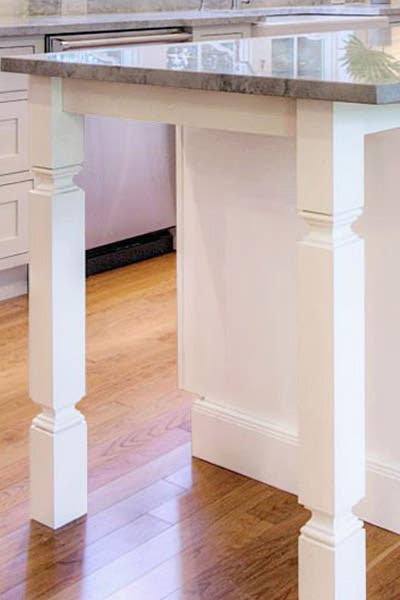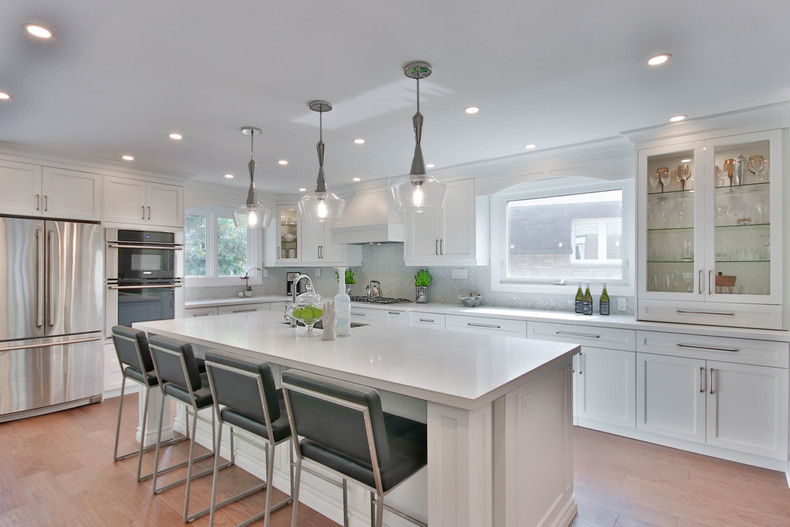Change Any Kind Of Kitchen Room with Beautiful Legs For Kitchen Island Selections
Change Any Kind Of Kitchen Room with Beautiful Legs For Kitchen Island Selections
Blog Article
An Overview to Picking the Perfect Legs For Kitchen Area Island for Your Home
Picking the perfect legs for your kitchen island is a nuanced decision that affects both the functionality and visual allure of this central space. Aspects such as elevation, products, and style play a crucial function in harmonizing your island with the total cooking area style. Additionally, understanding the importance of security and maintenance can dramatically influence your option. As you consider these elements, it becomes evident that the right legs can transform not just the appearance of your cooking area yet likewise its functionality for several years to come. What details features should you focus on in this option procedure?

Comprehending Cooking Area Island Legs
When picking legs for a cooking area island, it's essential to comprehend their visual and useful roles in the total style. The legs act as a vital support system, ensuring security and sturdiness for the island, which typically operates as an office, eating location, or collecting place. The choice of material and construction method must be robust sufficient to withstand day-to-day use and possible wear.
Along with their architectural duties, legs contribute dramatically to the island's aesthetic charm. They can improve the kitchen area's design, whether with conventional, modern, or eclectic styles. The elevation and proportion of the legs are also crucial factors to consider; they must harmonize with the island's kitchen counter height while making certain comfy seating for those utilizing the area.
Furthermore, the leg style can affect the general flow of the cooking area. Open, airy leg designs can produce a feeling of lightness, while strong, considerable legs may convey a more based and stable visual - Legs For Kitchen Island. Understanding these useful and visual elements will lead house owners in making educated selections that match their kitchen area's layout and improve its use
Popular Styles and Materials
The option of legs for a kitchen island includes a selection of prominent styles and products, each offering one-of-a-kind features that can improve both functionality and appearances. Conventional legs commonly show elaborate information and craftsmanship, boosting timeless cooking area layouts.

Height and Stability Considerations

The legs of the kitchen area island must give sufficient support, making certain that the structure can stand up to daily use without tottering or moving. Material choice plays a significant function in stability; steel legs, for circumstances, have a tendency to provide greater stamina contrasted to wood.
Matching Your Cooking Area Aesthetic
Picking the right legs for your cooking area island exceeds functionality; it also plays a considerable duty in the general aesthetic of the room. When choosing legs, consider the design style of your cooking area. For a contemporary appearance, streamlined steel or minimalist designs can produce a tidy, contemporary vibe. On the other hand, rustic or conventional kitchen areas typically take advantage of wooden legs with intricate detailing or a troubled surface, boosting heat and personality.
Color is one more critical aspect. Legs that complement or contrast with your island's surface and bordering cabinets can create aesthetic harmony or striking focal points. Combining dark wood legs with a light marble countertop can include deepness and interest. Additionally, think about the finish of the legs; matte, shiny, or textured surfaces can substantially influence the general feeling of the kitchen area.
Installation and Maintenance Tips
Mounting kitchen area island legs requires mindful interest to information to learn the facts here now ensure both security and visual navigate to this website allure. Utilize a stud finder to situate wall surface studs if you are affixing the legs to a wall or using braces for included support.
When securing the legs, use high-quality screws and, if required, timber adhesive for additional stamina. For steel legs, make sure that you are utilizing appropriate supports and devices to avoid damage to your floor covering. It is a good idea to check for levelness after setup, making adjustments as required to prevent wobbling.
Maintenance is similarly crucial for longevity - Legs For Kitchen Island. On a regular basis inspect the legs for any type of indications of wear or helping to loosen, specifically in high-traffic areas. Tidy the legs with an ideal cleaner, preventing abrasive materials that might damage the surface area. For wood legs, take into consideration applying a timber conditioner occasionally to preserve their finish. By complying with these setup and maintenance pointers, you can make sure that your kitchen island legs continue to be both useful and aesthetically attractive.
Verdict
Finally, picking the proper legs for a kitchen island requires cautious factor to consider of elevation, stability, and visual compatibility. By picking ideal materials and styles that align with the overall cooking area style, capability can be improved while maintaining visual allure. Appropriate installment and continuous upkeep further contribute to the sturdiness and long life of the cooking area island. Eventually, thoughtful leg option plays a vital role in boosting both the functionality and design of the cooking area area.
When choosing legs for a kitchen area island, it's essential to recognize their visual and useful roles in the overall style. Open, ventilated leg styles can produce a sense of lightness, Read Full Report while solid, significant legs may convey a more based and secure visual. The legs of the kitchen island need to supply adequate support, making sure that the framework can withstand everyday use without moving or tottering.Installing cooking area island legs calls for mindful focus to information to make sure both stability and aesthetic allure.In final thought, selecting the ideal legs for a cooking area island necessitates careful factor to consider of elevation, security, and visual compatibility.
Report this page